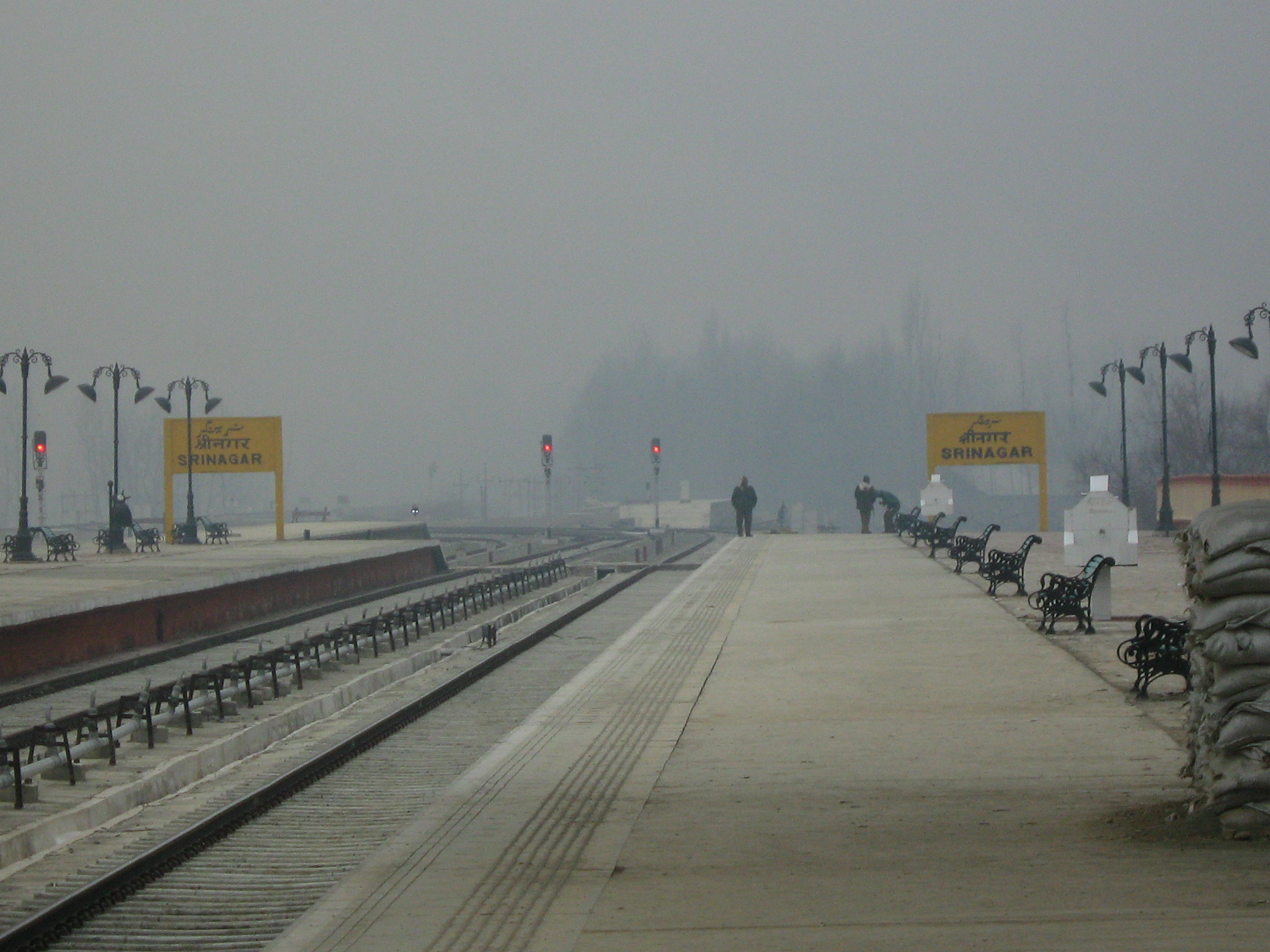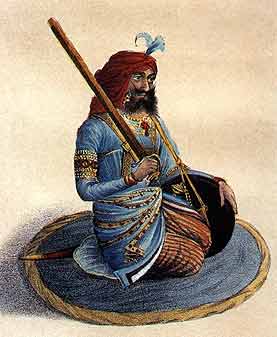|
Imambara Zadibal
Imambara Zadibal was the first Imambara ''or Marak'' constructed in Kashmir Valley by Kaji Chak, minister in the regime of Sultan Mohammad in the year 1518. It is situated in the Zadibal area of Srinagar to the west side of Hari Parbat fort. This Imambara was burned down and destroyed number of times. Architecture Inspired by the Persian style of architecture, Imambara Zadibal is a two-storey building. Its Maharaji bricks cover an area of over 75 square meters. This shrine has various sideways floor raisings called Gulam Gardish. There is a central ground level floor called Pokhr. It also has a large gallery with four gates. Currently, the structure is under the supervision of All Jammu and Kashmir Shia Association. Observances Shia Muslims are a minority in Kashmir. During the first 10 days of Muharram, Imambada Zadibal becomes a centre of mourning and religious gathering ( Majlis) in Zadibal. Azadars ''(Mourners)'' join in the mourning, usually from Bota Kadal, Lalbaza ... [...More Info...] [...Related Items...] OR: [Wikipedia] [Google] [Baidu] |
Shia Islam
Shīʿa Islam or Shīʿīsm is the second-largest branch of Islam. It holds that the Islamic prophet Muhammad designated ʿAlī ibn Abī Ṭālib as his successor (''khalīfa'') and the Imam (spiritual and political leader) after him, most notably at the event of Ghadir Khumm, but was prevented from succeeding Muhammad as the leader of the Muslims as a result of the choice made by some of Muhammad's other companions (''ṣaḥāba'') at Saqifah. This view primarily contrasts with that of Sunnī Islam, whose adherents believe that Muhammad did not appoint a successor before his death and consider Abū Bakr, who was appointed caliph by a group of senior Muslims at Saqifah, to be the first rightful (''rāshidūn'') caliph after Muhammad. Adherents of Shīʿa Islam are called Shīʿa Muslims, Shīʿītes, or simply Shīʿa or Shia. Shīʿa Islam is based on a ''ḥadīth'' report concerning Muhammad's pronouncement at Ghadir Khumm.Esposito, John. "What Everyone Nee ... [...More Info...] [...Related Items...] OR: [Wikipedia] [Google] [Baidu] |
Mourning Of Muharram
The Mourning of Muharram (also known as Azadari, Remembrance of Muharram or Muharram Observances) is a set of commemoration rituals observed primarily by Shia people. The commemoration falls in Muharram, the first month of the Islamic calendar. Many of the events associated with the ritual take place in congregation halls known as '' Hussainia or Imambargah''. The event marks the anniversary of the Battle of Karbala (AD 680/AH 61), when Imam Hussain ibn Ali, a grandson of Prophet Muhammad, was martyred by the forces of Ubayd Allah ibn Ziyad, on the orders of Yazid I. Family members and companions accompanying him were either killed or subjected to humiliation. The commemoration of this event during the yearly mourning season, with the Day of Ashura as the focal date, serves to define Shia communal identity. Muharram observances are carried out in countries with a sizable Shia Muslim population. Storytelling, weeping and chest beating, wearing black, partial fasting, street proc ... [...More Info...] [...Related Items...] OR: [Wikipedia] [Google] [Baidu] |
Buildings And Structures In Srinagar
A building, or edifice, is an enclosed structure with a roof and walls standing more or less permanently in one place, such as a house or factory (although there's also portable buildings). Buildings come in a variety of sizes, shapes, and functions, and have been adapted throughout history for a wide number of factors, from building materials available, to weather conditions, land prices, ground conditions, specific uses, prestige, and aesthetic reasons. To better understand the term ''building'' compare the list of nonbuilding structures. Buildings serve several societal needs – primarily as shelter from weather, security, living space, privacy, to store belongings, and to comfortably live and work. A building as a shelter represents a physical division of the human habitat (a place of comfort and safety) and the ''outside'' (a place that at times may be harsh and harmful). Ever since the first cave paintings, buildings have also become objects or canvasses of much artistic ... [...More Info...] [...Related Items...] OR: [Wikipedia] [Google] [Baidu] |
Srinagar Airport
Sheikh ul-Alam International Airport also known as Srinagar Airport and Budgam Airbase, is an international airport serving Srinagar, the summer capital of Jammu and Kashmir, India. It is owned by the Indian Air Force, and the Airports Authority of India operates a civil enclave at the airport. It was designated as an international airport in 2005. It has an integrated terminal and one asphalt runway. The airport is actually located in Budgam, which is from Srinagar. History Originally, the Srinagar Airport was used only by the Indian Air Force. During the Indo-Pakistani War of 1947, the airport received an airlift of Indian troops who prevented Pakistan from capturing the city of Srinagar. Although the airport was small and lacked landing aids, the airlift was still carried out successfully on 27 October. In September 1965, the Srinagar Airport was subjected to an air raid amid the Indo-Pakistani War of 1965, which left some aircraft damaged. In 1979, the Airports Authori ... [...More Info...] [...Related Items...] OR: [Wikipedia] [Google] [Baidu] |
Srinagar Railway Station
Srinagar railway station is a railway station of the city of Srinagar in the Indian union territory of Jammu and Kashmir. The station is part of the Jammu–Baramulla line and lies in Firozpur division, which once completed, will connect the city to the rail network of India. Currently, services are to Baramulla and Banihal. The railway line once fully completed is expected to increase tourism and travel to the Kashmir Valley. The work of last leg Chenab Bridge is in final stages and is expected to be completed by 2021. The station is also planned to be part of a second railway line, the Srinagar–Kargil–Leh line. History The station has been built as part of the Jammu–Baramulla line megaproject, intending to link the Kashmir Valley with Jammu Tawi and the rest of the Indian railway network. Location The station, in Nowgam, is 8 km from the city centre. The main hub of stations in Kashmir Is Budgam stations and where all trains are being repaired or any other ... [...More Info...] [...Related Items...] OR: [Wikipedia] [Google] [Baidu] |
Khushal Sar
Khushal Sar ( ; ) is a lake located in Srinagar, Jammu and Kashmir, India. It is in a highly deteriorated condition and has been encroached upon at many places with illegal construction and landfilling. The lake once stretched from Zoonimar up to the Aali Masjid but now it is considerably reduced. It is connected to the Anchar lake via a small channel. Another smaller lake, known as Gilsar, is connected to the Khushal Sar via a narrow strait, which is spanned by a bridge known as Gil Kadal. The Gilsar lake is in turn connected to the Nigeen lake via the Nallah Amir Khan. Until the 1970s, the Mar Canal drained into this lake providing navigability up to Ganderbal Ganderbal is a town and a municipality committee in Ganderbal district in the Indian union territory of Jammu and Kashmir. It is the headquarters of Ganderbal district.It is in Central Kashmir, it has an average elevation of 1,619 metres (5,3 ... via the Anchar lake. After the filling up of the Mar Canal ... [...More Info...] [...Related Items...] OR: [Wikipedia] [Google] [Baidu] |
Zadibal Assembly Constituency
Zadibal Assembly constituency is one of the 87 constituencies in Jammu and Kashmir Legislative Assembly in India administered union territory of Jammu and Kashmir. Zadibal, located at , is part of Srinagar district, the summer capital of union territory of Jammu and Kashmir. Members Election results 2014 References External links *Jammu and Kashmir district portal Assembly constituencies of Jammu and Kashmir Srinagar district {{India-constituency-stub ... [...More Info...] [...Related Items...] OR: [Wikipedia] [Google] [Baidu] |
Ranbir Singh Of Jammu And Kashmir
Ranbir Singh (August 1830 – 12 September 1885) was Maharaja of Jammu and Kashmir from 1856 until his death in 1885. Ranbir Singh was the third son of Gulab Singh, the founder of the Jammu and Kashmir state. Ranbir Singh ascended the throne in 1856 after Gulab Singh's abdication due to his poor health. Unlike European women and children, Indian mutineers were not allowed to take refuge in his state. He also sent his troops to help the British to besiege Delhi. He was subsequently rewarded for his behaviour during the mutiny. He went on to annex Gilgit which had previously witnessed a rebellion against the state. The princely states of Hunza and Nagar started paying tributes to Jammu and Kashmir during his reign. He also established a modern judicial system. Civil and criminal laws were compiled into the Ranbir Penal Code during his reign. Ranbir Singh was a scholar of Sanskrit and Persian languages and had many books translated. Early life Singh was born at Ramgarh, J ... [...More Info...] [...Related Items...] OR: [Wikipedia] [Google] [Baidu] |
Afghan Rule In Kashmir
The history of Kashmir is intertwined with the history of the broader Indian subcontinent and the surrounding regions, comprising the areas of Central Asia, South Asia and East Asia. Historically, Kashmir referred to the Kashmir Valley. Today, it denotes a larger area that includes the Indian-administered union territories of Jammu and Kashmir (which consists of Jammu and the Kashmir Valley) and Ladakh, the Pakistan-administered territories of Azad Kashmir and Gilgit-Baltistan, and the Chinese-administered regions of Aksai Chin and the Trans-Karakoram Tract. In the first half of the 1st millennium, the Kashmir region became an important centre of Hinduism and later—under the Mauryas and Kushanas—of Buddhism. Later in the ninth century, during the rule of the Karkota Dynasty, a native tradition of Shaivism arose. It flourished in the seven centuries of Hindu rule, continuing under the Utpala and the Lohara dynasties, ending in mid-14th century. Islamization in Kashmir began ... [...More Info...] [...Related Items...] OR: [Wikipedia] [Google] [Baidu] |







.jpg)